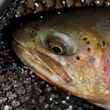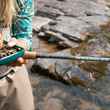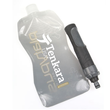In one of my favorite pieces of last-century fishing writing the British fishing theorist and statesman Sir Edward Grey uses the phrase “crisis of the rise” to describe the challenge and urgency of dry fly fishing. I really dug that phrase when I first encountered it in my mid 20s—perhaps because it conferred onto my practice of fishing a legitimacy and seriousness too easily obscured by a trunk full of Cliff Bars and energy drinks, by a water-wrecked cell phone that could only receive calls, by a selective animus toward personal hygiene (the hex hatch, the hex hatch, the hex hatch). In those unboated, 4-weight, small stream days, I either fished dries or swung streamers or wets, and during the off-season I could always find an interesting piece of writing that spoke to the metaphysical essence of those regal approaches, something to read next to a clanking radiator on a cold Michigan night: Gordon or Grey or Voelker or Haig-Brown.
But what about the stripped streamer? Who will sing of the Butt Monkey arcing through the dawn toward a cutbank? The Double Nickel swiveling at last light past a logjam?
Brothers and sisters of the frayed fingerguard, the clawed line-hand, the aching rod-shoulder, it is time to elevate the stripped streamer to the high pantheon of angling techniques. It is time to speak of the three fundamental, even existential, crises of the strip.


























![Instructors John Juracek [left] and Brant Oswald [right] from The School of Trout (photo: Tim Romano). school of trout instructors john juracek brant oswald](https://www.hatchmag.com/sites/default/files/styles/gallery_thumbnail/public/field/image/romano-0024.jpg?itok=X_had7Jf)


